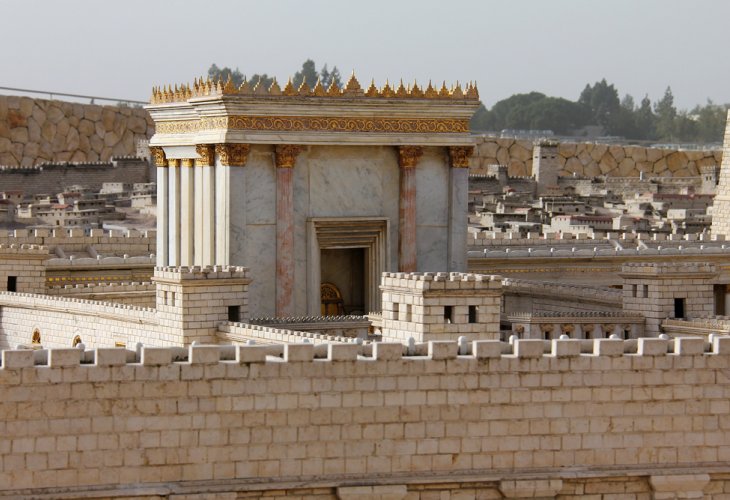Issues in the Bible
What Is a “Figured Stone”? The Hidden Meaning Behind the Torah’s Ancient Prohibition
The spiritual and historical meaning behind the Torah’s ban on the “figured stone” — a command that bridges faith, symbolism, and the archaeology of ancient Jerusalem
 (Photo: shutterstock)
(Photo: shutterstock)In Parshat Bechukotai, the Torah commands: “You shall not place a figured stone in your land to bow down upon it” (Vayikra 26:1).
What exactly is a "figured stone" and what is the nature of this prohibition?
The Talmudic Interpretation: A Forbidden Stone Floor
The Talmud (Megillah 22b) explains that this verse prohibits paving a stone floor for the purpose of bowing down to God upon it. Such an act resembles the construction of a personal temple — an alternative site of worship outside the chosen place, the Beit HaMikdash, and is therefore forbidden.
The word mashchit comes from the Hebrew root meaning covering or paving. The prohibition applies specifically to bowing with outstretched arms and legs (a full prostration), not merely kneeling.
Targum Yonatan: A Carved or Decorated Stone
According to Targum Yonatan, himself a Tannaic sage, the verse refers not to paving stones but to a decorated or engraved stone. He translates: “And you shall not place a carved stone in your land to bow down upon it.”
Here, mashchit comes from the idea of something people “gaze upon” — an object that draws the eye because of its intricate design or imagery. Thus, the prohibition extends even to bowing down upon a decorated or visually appealing stone, lest it resemble idolatrous reverence.
Targum Yerushalmi: “A Stone of Error”
The Jerusalem Targum renders the phrase as “Even d’ta’u” — “a stone of error”, an allusion to idolatry and to being “led astray.” These were stones once used for pagan worship, which the Torah forbids even repurposing for holy use.
Building on this, Rabbi David Zvi Hoffmann suggests that the famous “Even ha-To’im” (Stone of the Strayers) in Jerusalem — mentioned in rabbinic sources, may have originally been a remnant of such structures. The name, meaning “the stone of those who erred,” could reflect its ancient pagan origin.
During the Second Temple era, however, the Even ha-To’im served a completely different purpose: it was the public lost-and-found center. During the great pilgrimages, when vast crowds filled Jerusalem, anyone who lost an item would go to this elevated stone to report or claim it. Its height and visibility made it ideal for such communal use.
The “Stone of the Strayers” in Jewish Tradition
The Even ha-To’im also appears in the story of Choni HaMe’agel (Choni the Circle-Maker). When people asked him to pray for rain to stop, he pointed to a massive stone and said: “Just as it is impossible to erase this stone from the world, so it is impossible to pray for the rain to depart.”
This description, too, suggests that the Even ha-To’im was a large, enduring, and prominent landmark in Jerusalem.
Archaeological Echoes
Recent archaeological excavations along the Pilgrims’ Road — the ancient route ascending from the Pool of Siloam to the Temple Mount — uncovered a raised platform with steps beside the path. Scholars suggest that this podium-like structure may have been the Even ha-To’im, the very stone mentioned in rabbinic literature.
If so, the discovery beautifully ties together the biblical prohibition, the rabbinic memory, and archaeological evidence — revealing how an ancient commandment against idolatrous stonework became, over time, a symbol of Jerusalem’s communal and spiritual life.

